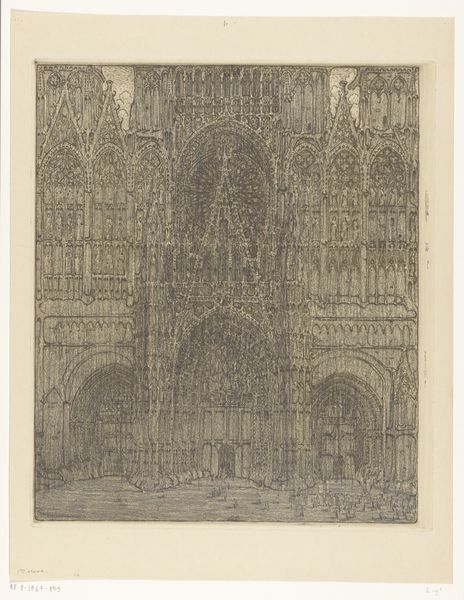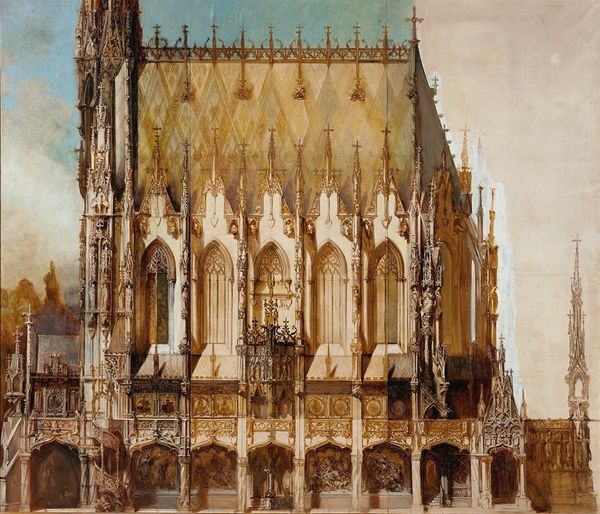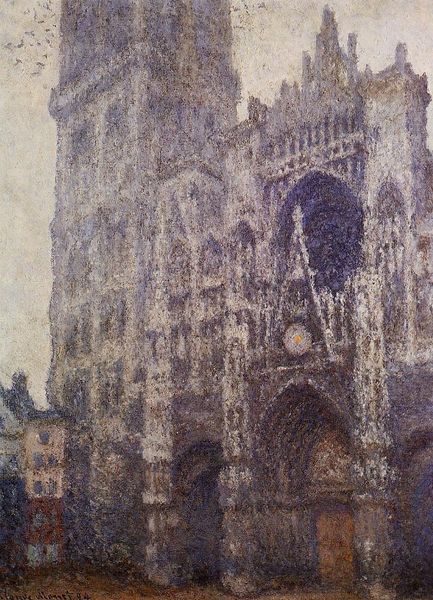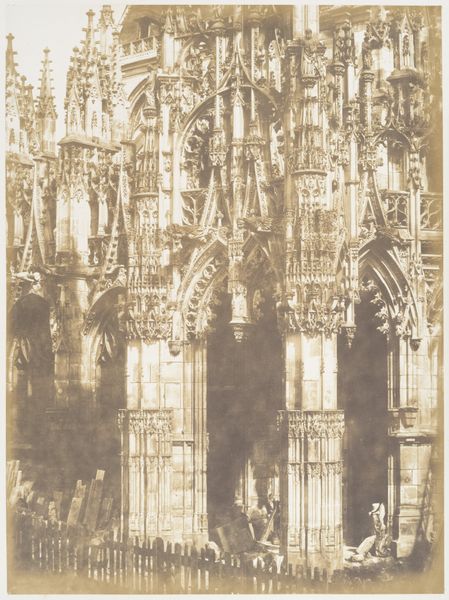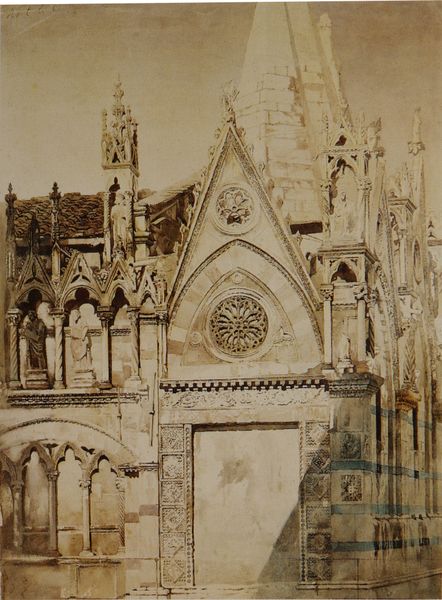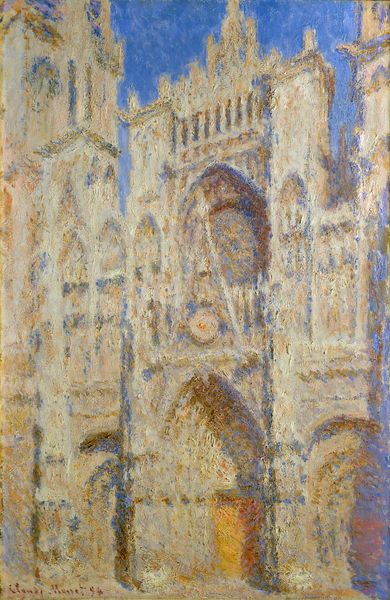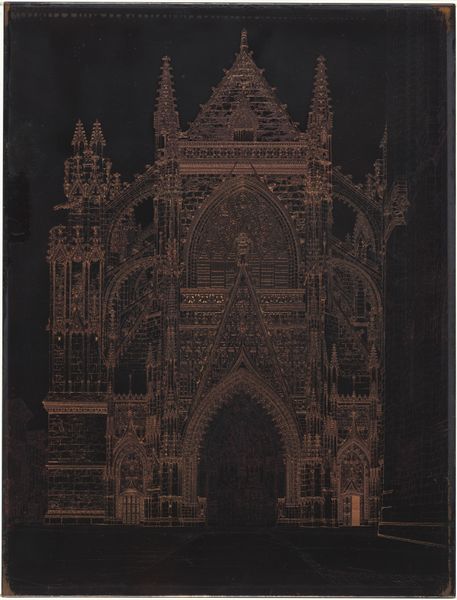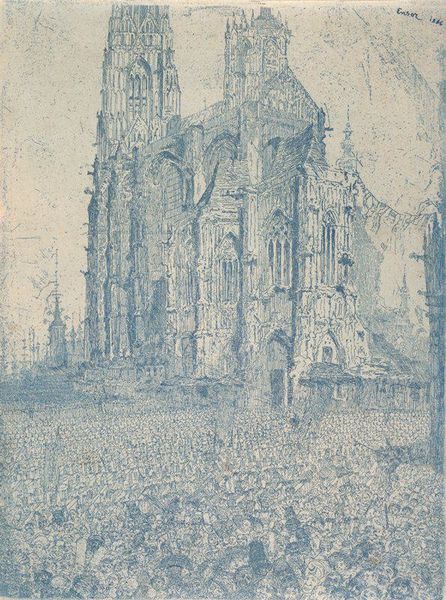
Dimensions: 73 x 107 cm
Copyright: Public domain
Curator: Good afternoon, and welcome. Here we have Claude Monet's "Rouen Cathedral, evening, harmony in brown," painted in 1894. A significant piece from his series on the cathedral's facade. Editor: My first impression is that the texture is remarkably tactile. It almost looks like the stone itself is being built up right there on the canvas with rough labor. Curator: Absolutely. The surface demonstrates a profound interest in capturing the ephemeral qualities of light and atmosphere, using broken brushstrokes. Semiotically, the cathedral functions as a signifier of stability and tradition. Editor: While also demonstrating how tradition can be eroded or transformed. I’m more struck by the labor. Look closely at the thickness of the paint; each stroke represents a physical act. The material qualities of the pigment, its origin, the cost... These speak to the burgeoning art market as well. Curator: Interesting perspective. I read it more as a dialogue between form and light. How light transforms a fixed form. The harmony in brown, as the title suggests, evokes a specific mood through a restrained palette. What of its urban setting do you note? Editor: Well, it's difficult to ignore the urban setting implied, the cathedral being the central architectural element. This implicates discussions around class, resources, the church, state power—all manifest in the built environment via physical labor. Curator: And we mustn't disregard the symbolism Monet imbues through his chosen composition. Notice how he crops the cathedral; the asymmetry creates a dynamic tension. The painting’s structure, the balance, or perhaps the imbalance, allows the viewer’s eye to experience visual disruption. Editor: I agree. Seeing it, now, as both constructed object *and* commodity helps understand why Impressionism began capturing scenes of industrial society and leisure. So different from what and who occupied those grand halls a century prior to the canvas! Curator: Indeed, a rich exchange of viewpoints to consider. Editor: Food for thought, to be sure!
Comments
No comments
Be the first to comment and join the conversation on the ultimate creative platform.


